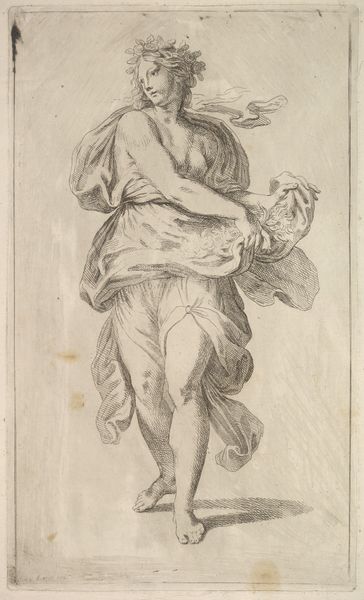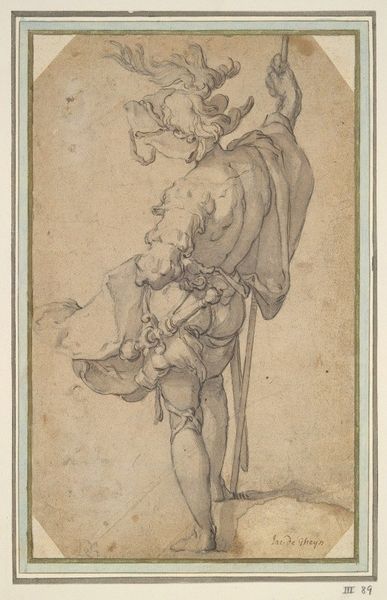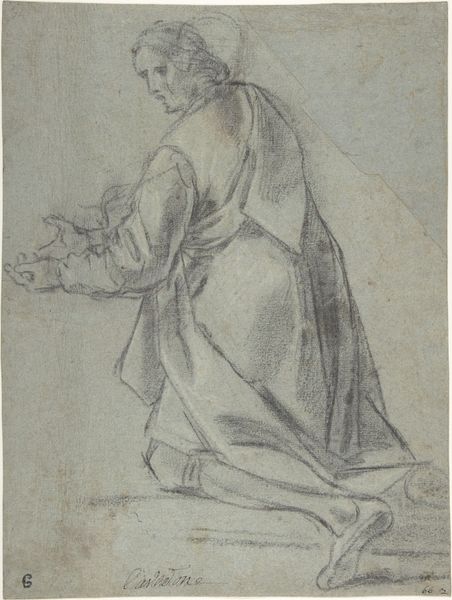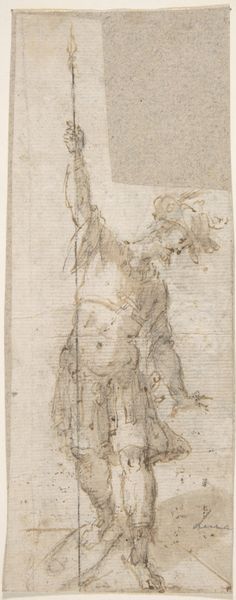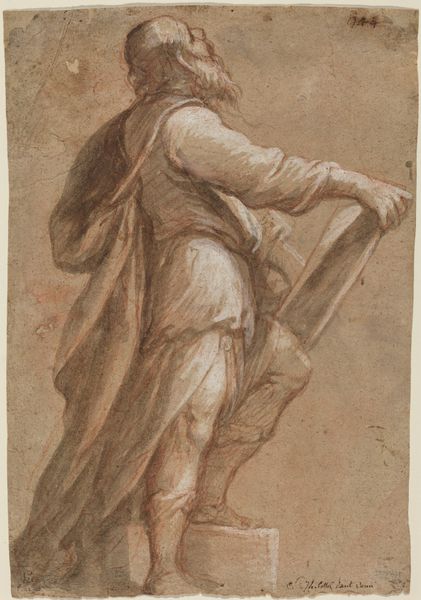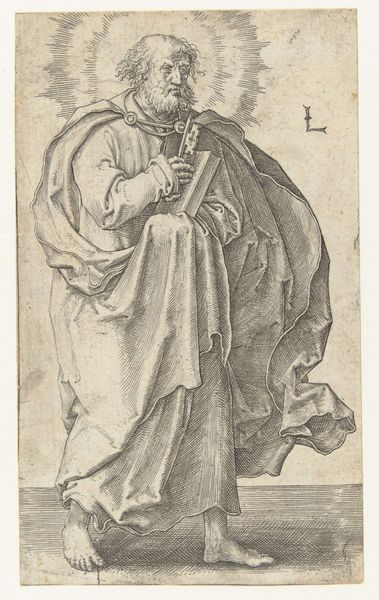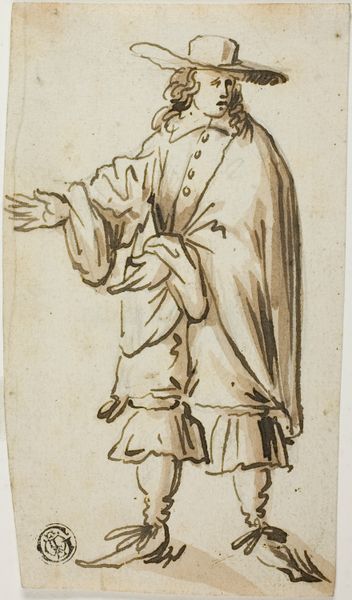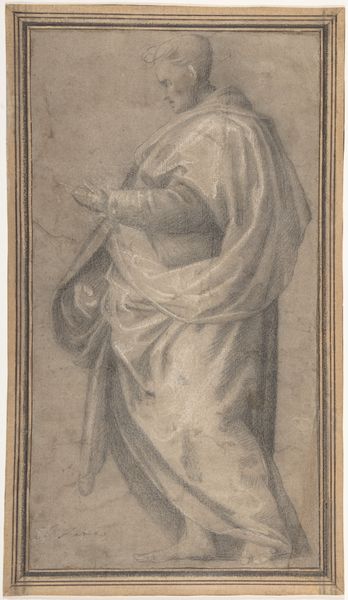
Standing Figure of Christ with Arms Upraised 1484 - 1539
0:00
0:00
drawing, charcoal
#
drawing
#
charcoal drawing
#
figuration
#
line
#
charcoal
#
history-painting
#
italian-renaissance
#
christ
Dimensions: 15-13/16 x 9-1/8 in. (40.2 x 23.1 cm)
Copyright: Public Domain
Editor: So, here we have Giovanni Antonio da Pordenone's "Standing Figure of Christ with Arms Upraised," created sometime between 1484 and 1539. It’s a charcoal drawing, and I'm immediately drawn to the lines—they feel both powerful and delicate. What stands out to you when you look at this drawing? Curator: What interests me is the charcoal itself. Think about its production: the burning of wood, the skill in controlling that burn. Then Pordenone, holding this charred stick, translating divine vision through physical labor. Where did he source his materials? Was this high-quality charcoal readily available, or was it something he painstakingly crafted himself? These are important questions about the economics of art making, and the blurring lines between the artist as divinely inspired versus the artist as skilled laborer. Editor: That’s a really interesting perspective. I hadn’t considered the materiality of the charcoal so deeply. Do you think that focusing on materials changes the way we should interpret the work? Curator: Absolutely. By understanding the physical and economic conditions of its creation, we move beyond purely aesthetic readings. This wasn't just an act of inspiration; it was a process of production, influenced by available resources, skill, and likely the demands of patronage. Think about the support – paper. Was this drawing intended as a finished artwork, a preliminary sketch for a painting or sculpture, or was it created to fulfill the needs of others, such as the master of a workshop? Editor: I guess thinking about it that way helps connect the piece to the wider society it was part of. Curator: Exactly. It makes the religious figure more tangible, the drawing itself less like a divine echo and more like a product of human endeavor. It helps us to understand how images were produced in society and what needs the production satisfied. Editor: I see. Thanks for making me think about the material aspects of art in this way! Curator: It’s just as important to understand the production process as it is to grasp iconography and the symbolic meaning. They’re inseparable, really.
Comments
No comments
Be the first to comment and join the conversation on the ultimate creative platform.


